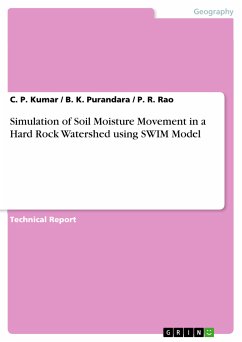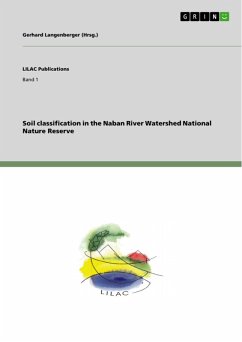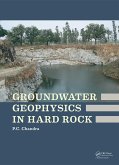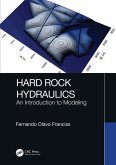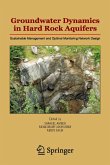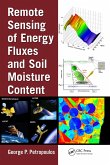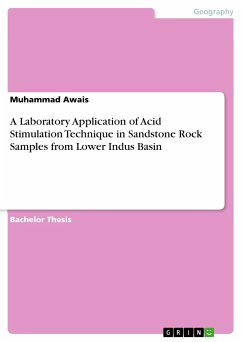Technical Report from the year 2014 in the subject Geography / Earth Science - Geology, Mineralogy, Soil Science, , language: English, abstract: A very large fraction of the water falling as rain on the land surfaces of the earth or applied irrigation water moves through unsaturated soil during the subsequent processes of infiltration, drainage, evaporation, and the absorption of soil-water by plant roots. The water movements in the unsaturated zone, together with the water holding capacity of this zone, are very important for the water demand of the vegetation, as well as for the recharge of the ground water storage. A fair description of the flow in the unsaturated zone is also crucial for predictions of the movement of pollutants into ground water aquifers. A number of simulation models are available for investigating the soil water balance. SWIM (Soil Water Infiltration and Movement) is a physically based, isothermal, one dimensional model of water flow through the soil coupled with a simple crop water extraction model in which the growth of the canopy and of the root system is a predetermined input. SWIM is driven by rainfall and potential evaporation, and so appears to be more appropriate than few other similar models if the available meteorological data are limited. The present study aims at modelling of soil moisture movement in Barchi watershed (Karnataka) using SWIM. Field and laboratory investigations were carried out to determine the saturated hydraulic conductivity at eight locations using Guelph Permeameter and soil moisture retention characteristics using the Pressure Plate Apparatus. The van Genuchten parameters of soil moisture retention function and hydraulic conductivity function were obtained through non-linear regression analysis. Daily rainfall and evaporation data of Barchi for the period 1996-97 to 1999-2000 were used for the simulations. Water balance components like runoff, evapotranspiration and drainage (groundwater recharge from rainfall) were determined through SWIM.
Dieser Download kann aus rechtlichen Gründen nur mit Rechnungsadresse in A, B, BG, CY, CZ, D, DK, EW, E, FIN, F, GR, HR, H, IRL, I, LT, L, LR, M, NL, PL, P, R, S, SLO, SK ausgeliefert werden.

